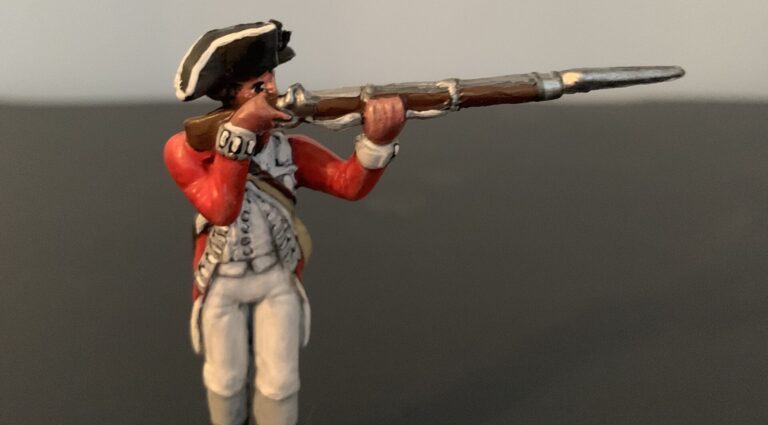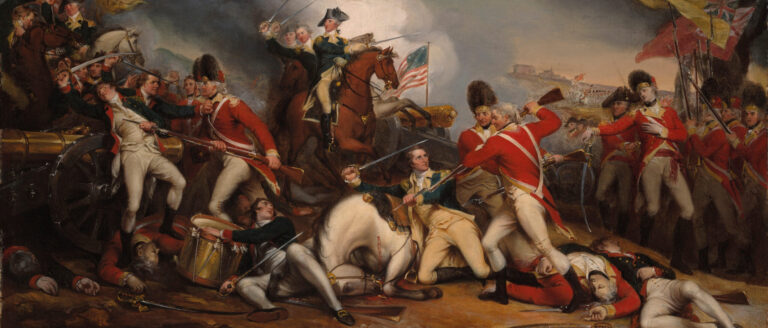In general, British regulars fought well throughout their struggle against the American rebellion, as attested to by the fact that they won most of the battles in which they were engaged. This is as one would have expected given the proud and long-standing tradition of service exemplified by many of His Majesty’s regiments. They had crossed a wide and tempestuous ocean to fight a war that many historians believe they could not win, or at least could not after the failure of General William Howe, commanding the King’s army in North America, to destroy the Continental Army in 1776 (and even more so after France entered into an alliance with young America in 1778). For notwithstanding Britain’s vaunted naval superiority and her army’s advantages over the rebels in equipment, training, experience, and discipline, the challenges of conquering and holding the vast area encompassed by her thirteen rebellious provinces, and doing so at the end of a three-thousand-mile-long supply line, were arguably insurmountable. In addition, the nature of that domain was particularly problematic for the Crown’s military designs as the predominantly hilly and forested terrain of the New World was very different from the Low Countries of Europe, where most British officers had their formative military experience, and was naturally advantageous to any defending force—which in most cases constituted rebel soldiers.
Most British infantry came from such humble backgrounds as farmers, laborers, and tradesmen, and a small number were convicts who opted for military service over incarceration when given the chance to do so. They had volunteered for the army and many made it a career so as to reap the benefits of steady employment and pay. Notwithstanding its inherent dangers, a soldier’s life represented an appealing alternative to working-class youth in the British Isles who otherwise faced the prospect of long hours of exhausting and sometimes hazardous manual labor or an apprenticeship under exploitative conditions in which they could be overworked or beaten without recourse. Many of His Majesty’s troops believed their unit was the best in the army and were encouraged in their conviction. They were also intensely loyal to the monarchy and in that regard stood in firm opposition to those supporting the American rebellion. The British soldier was motivated by certain ideals that were as important to him as the cause of liberty was to his American counterpart, for to His Majesty’s troops this conflict was not primarily about power or interest but rather a set of values to which they were deeply committed and that generally informed their conduct—discipline, duty, fidelity, honor, loyalty, and service.
For the most comprehensive and contemporary study of British soldiers serving during the Revolutionary War, see Don N. Hagist’s Noble Volunteers: The British Soldiers Who Fought the American Revolution (Westholme, 2020). Don, who is managing editor of the Journal of the American Revolution, has even more recently completed These Distinguished Corps: British Grenadier and Light Infantry Battalions in the American Revolution (Helion & Company, 2021).

